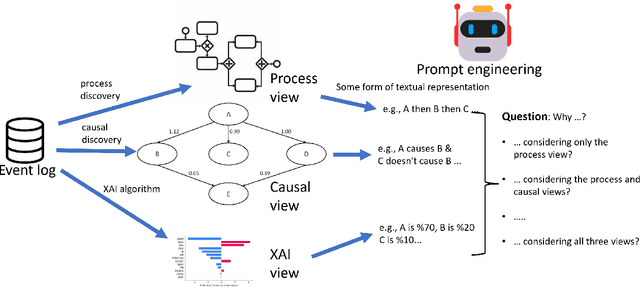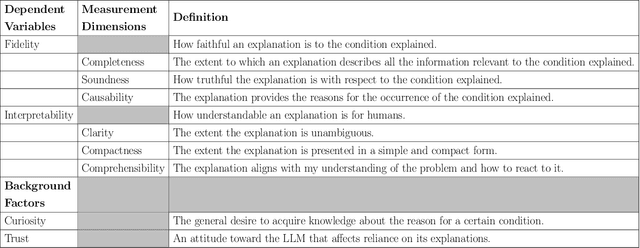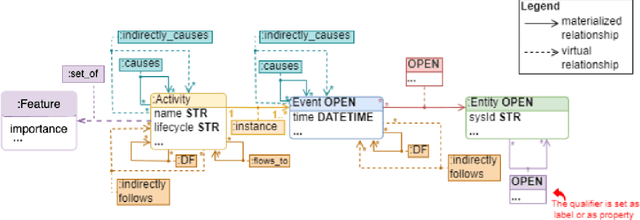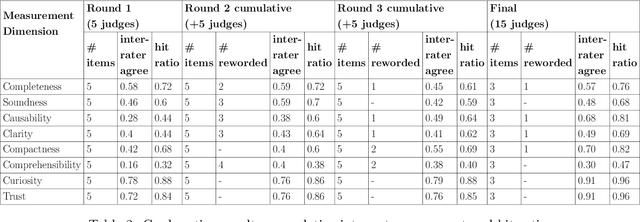Inna Skarbovsky
Beyond Black-Box Benchmarking: Observability, Analytics, and Optimization of Agentic Systems
Mar 09, 2025Abstract:The rise of agentic AI systems, where agents collaborate to perform diverse tasks, poses new challenges with observing, analyzing and optimizing their behavior. Traditional evaluation and benchmarking approaches struggle to handle the non-deterministic, context-sensitive, and dynamic nature of these systems. This paper explores key challenges and opportunities in analyzing and optimizing agentic systems across development, testing, and maintenance. We explore critical issues such as natural language variability and unpredictable execution flows, which hinder predictability and control, demanding adaptive strategies to manage input variability and evolving behaviors. Through our user study, we supported these hypotheses. In particular, we showed a 79% agreement that non deterministic flow of agentic systems acts as a major challenge. Finally, we validated our statements empirically advocating the need for moving beyond classical benchmarking. To bridge these gaps, we introduce taxonomies to present expected analytics outcomes and the ways to collect them by extending standard observability frameworks. Building on these foundations, we introduce and demonstrate novel approach for benchmarking of agent evaluation systems. Unlike traditional "black box" performance evaluation approaches, our benchmark is built from agent runtime logs as input, and analytics outcome including discovered flows and issues. By addressing key limitations in existing methodologies, we aim to set the stage for more advanced and holistic evaluation strategies, which could foster the development of adaptive, interpretable, and robust agentic AI systems.
Monetizing Currency Pair Sentiments through LLM Explainability
Jul 29, 2024



Abstract:Large language models (LLMs) play a vital role in almost every domain in today's organizations. In the context of this work, we highlight the use of LLMs for sentiment analysis (SA) and explainability. Specifically, we contribute a novel technique to leverage LLMs as a post-hoc model-independent tool for the explainability of SA. We applied our technique in the financial domain for currency-pair price predictions using open news feed data merged with market prices. Our application shows that the developed technique is not only a viable alternative to using conventional eXplainable AI but can also be fed back to enrich the input to the machine learning (ML) model to better predict future currency-pair values. We envision our results could be generalized to employing explainability as a conventional enrichment for ML input for better ML predictions in general.
Towards a Benchmark for Causal Business Process Reasoning with LLMs
Jun 08, 2024Abstract:Large Language Models (LLMs) are increasingly used for boosting organizational efficiency and automating tasks. While not originally designed for complex cognitive processes, recent efforts have further extended to employ LLMs in activities such as reasoning, planning, and decision-making. In business processes, such abilities could be invaluable for leveraging on the massive corpora LLMs have been trained on for gaining deep understanding of such processes. In this work, we plant the seeds for the development of a benchmark to assess the ability of LLMs to reason about causal and process perspectives of business operations. We refer to this view as Causally-augmented Business Processes (BP^C). The core of the benchmark comprises a set of BP^C related situations, a set of questions about these situations, and a set of deductive rules employed to systematically resolve the ground truth answers to these questions. Also with the power of LLMs, the seed is then instantiated into a larger-scale set of domain-specific situations and questions. Reasoning on BP^C is of crucial importance for process interventions and process improvement. Our benchmark could be used in one of two possible modalities: testing the performance of any target LLM and training an LLM to advance its capability to reason about BP^C.
How well can large language models explain business processes?
Jan 23, 2024



Abstract:Large Language Models (LLMs) are likely to play a prominent role in future AI-augmented business process management systems (ABPMSs) catering functionalities across all system lifecycle stages. One such system's functionality is Situation-Aware eXplainability (SAX), which relates to generating causally sound and yet human-interpretable explanations that take into account the process context in which the explained condition occurred. In this paper, we present the SAX4BPM framework developed to generate SAX explanations. The SAX4BPM suite consists of a set of services and a central knowledge repository. The functionality of these services is to elicit the various knowledge ingredients that underlie SAX explanations. A key innovative component among these ingredients is the causal process execution view. In this work, we integrate the framework with an LLM to leverage its power to synthesize the various input ingredients for the sake of improved SAX explanations. Since the use of LLMs for SAX is also accompanied by a certain degree of doubt related to its capacity to adequately fulfill SAX along with its tendency for hallucination and lack of inherent capacity to reason, we pursued a methodological evaluation of the quality of the generated explanations. To this aim, we developed a designated scale and conducted a rigorous user study. Our findings show that the input presented to the LLMs aided with the guard-railing of its performance, yielding SAX explanations having better-perceived fidelity. This improvement is moderated by the perception of trust and curiosity. More so, this improvement comes at the cost of the perceived interpretability of the explanation.
The WHY in Business Processes: Discovery of Causal Execution Dependencies
Oct 23, 2023Abstract:A crucial element in predicting the outcomes of process interventions and making informed decisions about the process is unraveling the genuine relationships between the execution of process activities. Contemporary process discovery algorithms exploit time precedence as their main source of model derivation. Such reliance can sometimes be deceiving from a causal perspective. This calls for faithful new techniques to discover the true execution dependencies among the tasks in the process. To this end, our work offers a systematic approach to the unveiling of the true causal business process by leveraging an existing causal discovery algorithm over activity timing. In addition, this work delves into a set of conditions under which process mining discovery algorithms generate a model that is incongruent with the causal business process model, and shows how the latter model can be methodologically employed for a sound analysis of the process. Our methodology searches for such discrepancies between the two models in the context of three causal patterns, and derives a new view in which these inconsistencies are annotated over the mined process model. We demonstrate our methodology employing two open process mining algorithms, the IBM Process Mining tool, and the LiNGAM causal discovery technique. We apply it on a synthesized dataset and on two open benchmark data sets.
A Framework for Verifiable and Auditable Federated Anomaly Detection
Mar 15, 2022



Abstract:Federated Leaning is an emerging approach to manage cooperation between a group of agents for the solution of Machine Learning tasks, with the goal of improving each agent's performance without disclosing any data. In this paper we present a novel algorithmic architecture that tackle this problem in the particular case of Anomaly Detection (or classification or rare events), a setting where typical applications often comprise data with sensible information, but where the scarcity of anomalous examples encourages collaboration. We show how Random Forests can be used as a tool for the development of accurate classifiers with an effective insight-sharing mechanism that does not break the data integrity. Moreover, we explain how the new architecture can be readily integrated in a blockchain infrastructure to ensure the verifiable and auditable execution of the algorithm. Furthermore, we discuss how this work may set the basis for a more general approach for the design of federated ensemble-learning methods beyond the specific task and architecture discussed in this paper.
An Integrated and Scalable Platform for Proactive Event-Driven Traffic Management
Mar 08, 2017



Abstract:Traffic on freeways can be managed by means of ramp meters from Road Traffic Control rooms. Human operators cannot efficiently manage a network of ramp meters. To support them, we present an intelligent platform for traffic management which includes a new ramp metering coordination scheme in the decision making module, an efficient dashboard for interacting with human operators, machine learning tools for learning event definitions and Complex Event Processing tools able to deal with uncertainties inherent to the traffic use case. Unlike the usual approach, the devised event-driven platform is able to predict a congestion up to 4 minutes before it really happens. Proactive decision making can then be established leading to significant improvement of traffic conditions.
 Add to Chrome
Add to Chrome Add to Firefox
Add to Firefox Add to Edge
Add to Edge